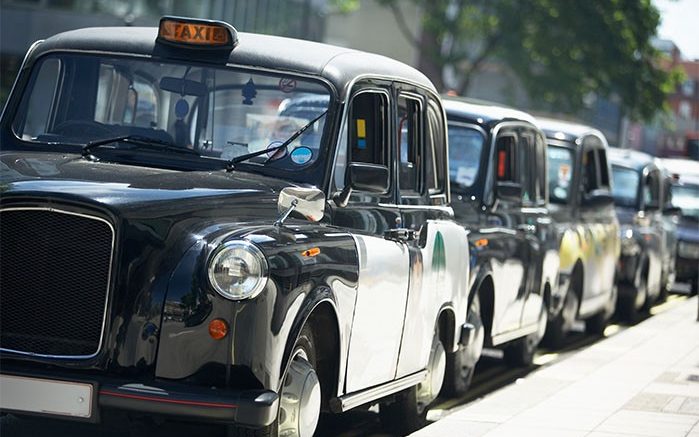Autonomous Vehicles Will Replace Taxi Drivers, But That’s Just the Beginning
 Source: Bureau of Labor Statistics.
Some of these may be a bit surprising, like postal carriers. But once fully autonomous vehicles are commonplace it would make sense for the Postal Service to make use of the technology to deliver mail, especially in areas where curbside mailboxes are standard and it would be rather simple for a mechanical arm to deposit and retrieve mail directly. Drivers of delivery trucks for companies like UPS and FedEx may also face extinction, if they’re not replaced by Amazon’s delivery drones first — or perhaps they’ll develop a combined system where self-driving trucks bring packages from the warehouse to their destination, and a drone delivers them the last few yards from curbside to doorstep.
Despite their importance for the economy, each of these professions pale in comparison to heavy and tractor-trailer truck drivers. This field employs the most by far — nine times as many people work as truckers than as taxi drivers, and it’s the most common job in a whopping 29 states — and is also better paid than most, with an average salary of about $42,000. When considering the total amount of wages paid to each of the seven occupations in the table above, truck drivers make up nearly half, while taxi drivers & chauffeurs only account for 3%. The development of self-driving tractor-trailers won’t be far behind automated taxi cabs, with companies like Daimler already testing out partially-automated trucks in Nevada.
While there may be other driving-focused jobs not included in these BLS statistics, there are certainly many more industries that will be impacted by the replacement of humans with self-driving vehicles. If this technology leads to a sharp decline in car ownership like many predict, insurance companies will have far fewer customers and may not need as many employees to service them. The same goes for mechanics and auto part manufacturers, who could face a massive drop in demand. Fewer human truckers on the road means fewer motel stays and rest stop visits, and cheaper trucking could take business away from freight trains or even oil pipelines. Vehicles programmed to obey traffic laws won’t need nearly as much policing, which also means fewer traffic tickets and less revenue for municipalities. The full scale of these economic shifts will be impossible to understand until they’re upon us, but the one thing we can know for sure is that they’ll touch almost every aspect of society.
Source: Bureau of Labor Statistics.
Some of these may be a bit surprising, like postal carriers. But once fully autonomous vehicles are commonplace it would make sense for the Postal Service to make use of the technology to deliver mail, especially in areas where curbside mailboxes are standard and it would be rather simple for a mechanical arm to deposit and retrieve mail directly. Drivers of delivery trucks for companies like UPS and FedEx may also face extinction, if they’re not replaced by Amazon’s delivery drones first — or perhaps they’ll develop a combined system where self-driving trucks bring packages from the warehouse to their destination, and a drone delivers them the last few yards from curbside to doorstep.
Despite their importance for the economy, each of these professions pale in comparison to heavy and tractor-trailer truck drivers. This field employs the most by far — nine times as many people work as truckers than as taxi drivers, and it’s the most common job in a whopping 29 states — and is also better paid than most, with an average salary of about $42,000. When considering the total amount of wages paid to each of the seven occupations in the table above, truck drivers make up nearly half, while taxi drivers & chauffeurs only account for 3%. The development of self-driving tractor-trailers won’t be far behind automated taxi cabs, with companies like Daimler already testing out partially-automated trucks in Nevada.
While there may be other driving-focused jobs not included in these BLS statistics, there are certainly many more industries that will be impacted by the replacement of humans with self-driving vehicles. If this technology leads to a sharp decline in car ownership like many predict, insurance companies will have far fewer customers and may not need as many employees to service them. The same goes for mechanics and auto part manufacturers, who could face a massive drop in demand. Fewer human truckers on the road means fewer motel stays and rest stop visits, and cheaper trucking could take business away from freight trains or even oil pipelines. Vehicles programmed to obey traffic laws won’t need nearly as much policing, which also means fewer traffic tickets and less revenue for municipalities. The full scale of these economic shifts will be impossible to understand until they’re upon us, but the one thing we can know for sure is that they’ll touch almost every aspect of society.
Yet this isn’t to say that driverless vehicles will cause more problems than they’ll solve — far from it. Robots taking human jobs means that those humans can spend their time doing higher-valued work that will drive even more progress, which is especially good news for less-desirable professions like long-haul trucking, which is actually facing a worsening shortage of workers. Automated vehicles, immune to road-rage and carelessness, will be safer and more efficient than human drivers — meaning less wasted energy, fewer accidents, and cheaper goods. As with all automation, it also has the potential to further concentrate wealth and power into the hands of a small elite, but this is something that can be mitigated with enough foresight and creativity. My next article will outline a few different business models that could be used for self-driving vehicles, and explore how we can best harness the benefits of the driverless revolution for the largest number of people.

- Full Time £9.95 per month.
- Part Time £5.75 per month.

